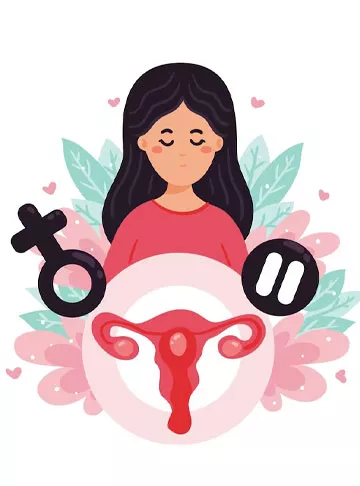What is Vaginismus?
Vaginismus is a female sexual dysfunction characterized by involuntary contractions of the muscles around the vagina, which make penetration and sexual intercourse challenging or painful. These spasms are often subconscious and uncontrollable, causing discomfort, anxiety, and fear associated with any form of vaginal penetration.
Who can get Vaginismus?
Vaginismus can affect women of all ages, backgrounds, and experiences. It can manifest in those with no prior sexual trauma or negative experiences, as well as in individuals who have had satisfying sexual relationships in the past. Both married and unmarried women can experience vaginismus.
What are the Types of Vaginismus?
Vaginismus is categorized into primary and secondary types. Primary vaginismus occurs when a woman has never been able to have pain-free vaginal penetration, including during sexual intercourse or medical exams. Secondary vaginismus involves the development of symptoms after a period of normal sexual functioning, often due to a triggering event like childbirth, trauma, or infection.
What are the Causes of Vaginismus?
The causes of vaginismus can be both physical and psychological. Emotional factors, such as fear of pain, anxiety, past traumatic experiences, relationship issues, or cultural or religious beliefs about sex, can contribute to the condition. Physical factors may include infections, vaginal dryness, or certain medical conditions.
What are the Symptoms of Vaginismus?
The primary symptom of vaginismus is the involuntary tightening of the muscles around the vagina, making penetration uncomfortable or impossible. Other symptoms may include pain, burning, or stinging sensations during attempts at penetration. Anxiety, fear, and emotional distress related to intercourse are also common symptoms.
Does Vaginismus Affect Fertility?
Vaginismus itself does not directly impact fertility. However, the condition can cause difficulty with sexual intercourse, which may hinder attempts to conceive. It's essential for individuals experiencing vaginismus and fertility concerns to consult a healthcare professional for appropriate guidance and support.
How is Vaginismus Diagnosed?
A diagnosis of vaginismus involves a thorough medical history review and a physical examination. The doctor may also conduct pelvic examinations to assess muscle contractions and rule out any underlying physical conditions contributing to the symptoms. Additionally, discussing symptoms and concerns openly with a healthcare provider is crucial for an accurate diagnosis.
How is Vaginismus Treated?
Treatment for vaginismus typically involves a multidisciplinary approach. It may include counselling or therapy to address any underlying psychological or emotional factors, along with exercises to help relax and strengthen the pelvic floor muscles. In some cases, the use of dilators or gradual desensitization techniques may be recommended to aid in overcoming muscle spasms and fear associated with penetration.
Conclusion
Vaginismus is a challenging condition that affects many women, causing physical and emotional distress. Understanding its causes, symptoms, diagnosis, and treatment options is crucial in providing the necessary support and guidance to those affected. With appropriate treatment and support, individuals experiencing vaginismus can achieve an improved quality of life and a fulfilling sexual experience.
Pregnancy Calculator Tools for Confident and Stress-Free Pregnancy Planning
Get quick understanding of your fertility cycle and accordingly make a schedule to track it















